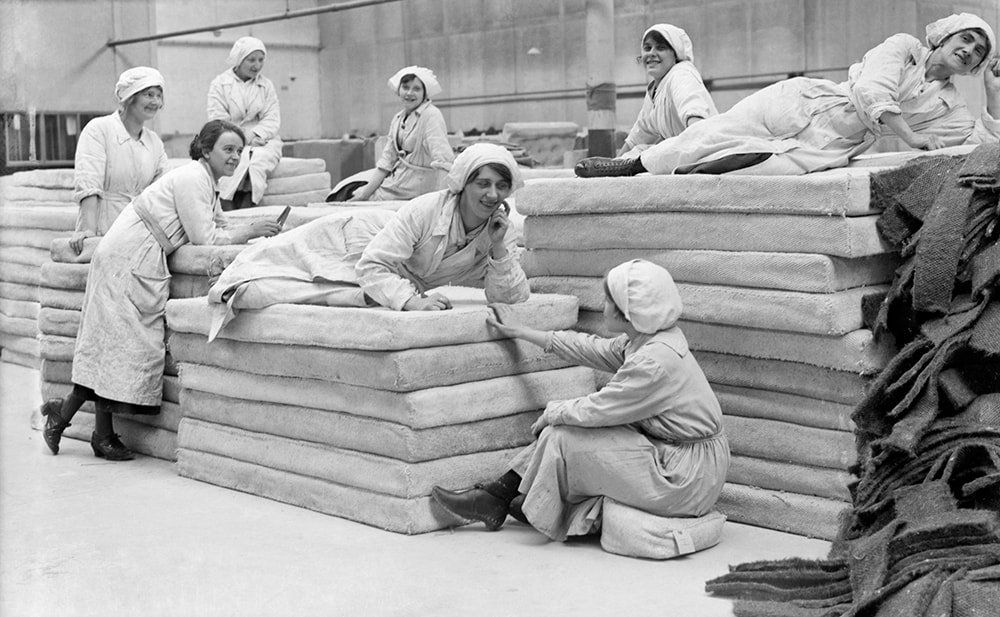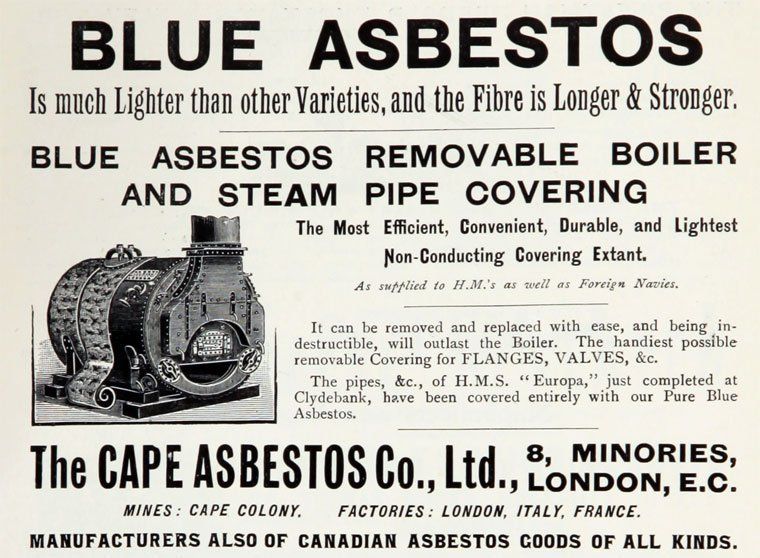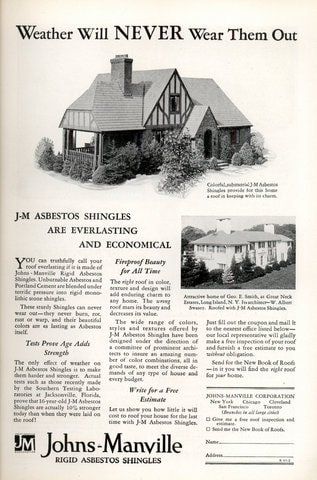
A HISTORY OF ASBESTOS
A brief history of Asbestos
Unprocessed asbestos was first imported into New Zealand in the late 1930s; and building products made from asbestos mixed with cement were produced over a 50-year period up until the mid-1980s. Locally manufactured asbestos-cement building products contained around 5 to 15% asbestos.
From around 1960, the predominant asbestos type used in buildings in New Zealand and most other industrialised countries was chrysotile. Smaller amounts of crocidolite and amosite were used in building products before 1960.
Besides construction, asbestos was used in New Zealand for machinery insulation, insulating tapes and cloths, gaskets and seals (particularly in the aviation and marine industries), and brake linings for motor vehicles.
Most New Zealand houses built in the 1940s-60s used tile or asbestos-cement sheet roofing. Asbestos cement was easily moulded, so was ideal for corrugated roofing. As well as being fire resistant, it was also inexpensive, durable, and easy to install. Asbestos-cement cladding in the form of sheets (e.g. Fibrolite) or planks (e.g. Hardiplank) was popular for the same reasons.

Slide title
Write your caption hereButton
Slide title
Write your caption hereButton
Slide title
Write your caption hereButton
From the 1950s through the 1960s and 70s, many asbestos materials were spray-applied, including textured decorative coatings on ceilings and walls that contained chrysotile asbestos. Other asbestos building products included vinyl sheet floor coverings (“lino”) with a chrysotile paper backing, vinyl-asbestos floor tiles, sprayed fire protection, and roofing membranes.
Because of this near ubiquitous use, future asbestos-related cancers in New Zealand are projected to involve mainly people employed in the building trades who were exposed to the mineral during construction, renovation and remediation projects.
It's now apparent that asbestos fibres inadvertently brought home from construction sites can cause serious health complications. This is known as secondary asbestos exposure, and it applies to not only children, but also to spouses, siblings and anyone else sharing the house.
The relationship between asbestos exposure and diseases such as malignant mesothelioma and lung cancer is well established, but now it seems other diseases not typically associated with asbestos may be linked to occupational and non-occupational forms of exposure.
Asbestos Containing Materials (ACMs)
Asbestos-containing materials can be dangerous to health if they are not properly maintained or removed carefully. There are two types of asbestos-containing materials:
Non-friable asbestos
A product that contains asbestos fibres that have been mixed with other materials, such as cement. Non-friable asbestos is commonly found in buildings. If non-friable asbestos is damaged or broken, it may release asbestos fibres into the air.
Friable asbestos
A material that contains asbestos that can be easily crumbled or reduced to powder, such as insulation. This type of asbestos is more likely to become airborne.
How much exposure to asbestos is dangerous?
Any exposure to asbestos is dangerous. Breathing in asbestos fibres regularly or ingesting large quantities of asbestos, for example due to a job or hobby, can lead to respiratory issues and cancer. Sometimes these issues do not develop until years after the exposure.
Other factors such as genetics or other lifestyle issues may also contribute to the effect that asbestos exposure has.
Asbestos in the home
Asbestos or asbestos-containing materials could be found in the following areas:
- roofing and gutters
- gables and eaves
- walls
- vinyl, carpet and tile underlay
- Lining behind wall tiles
- imitation brick cladding
- fencing
- sheds
- splashbacks in wet areas
- telecommunications pits
- some window putty
- expansion joints
- packing under beams
- concrete formwork
- Textured ceilings
Asbestos testing helps you clarify your problem and deal with it accordingly
If you think you have asbestos at your property or worksite, then it is important to get accurate asbestos testing carried out to determine the extent of the problem.
Asbestos dangers grow the longer the asbestos is in place, and if it is disturbed during building work so once it has been identified it is important to begin the removal process as soon as possible.
Asbestos Surveys offers asbestos surveys in main centres including Auckland, Wellington and Christchurch and across New Zealand for larger clients. Our team can work with you to deal with
commercial asbestos removal across New Zealand and removing
asbestos from your home if you are in the Hawkes Bay region.